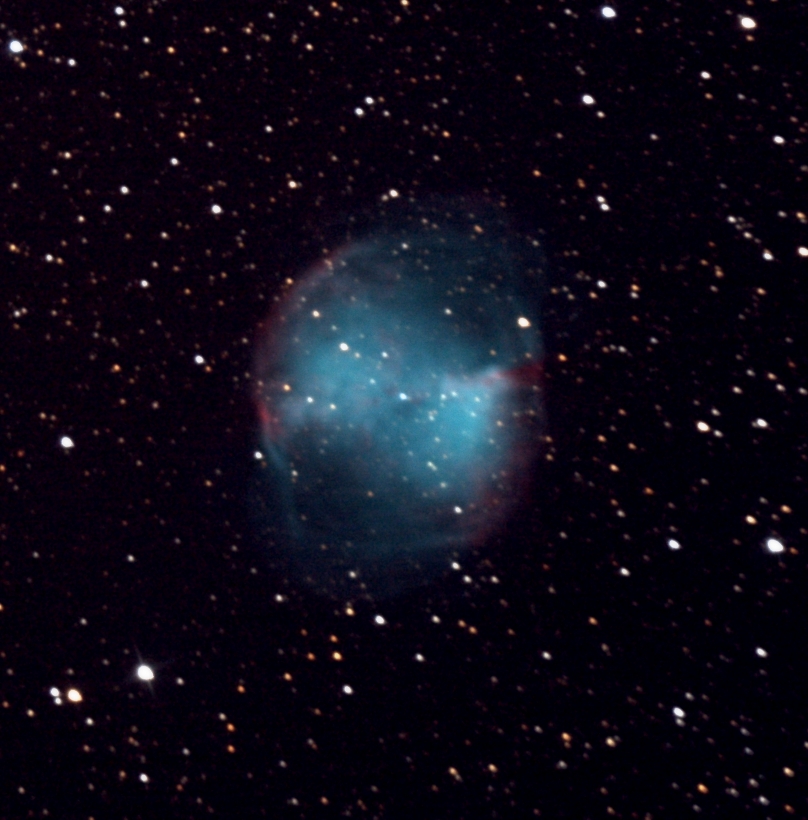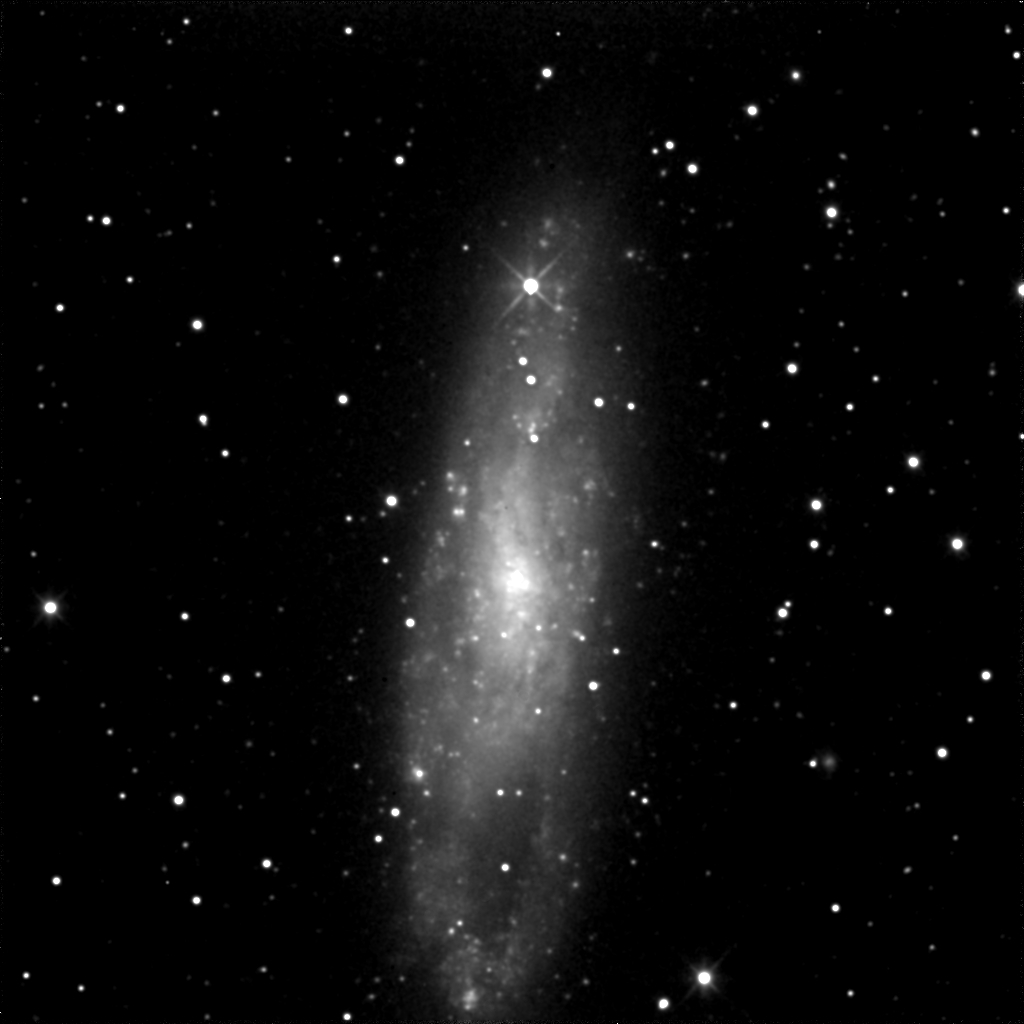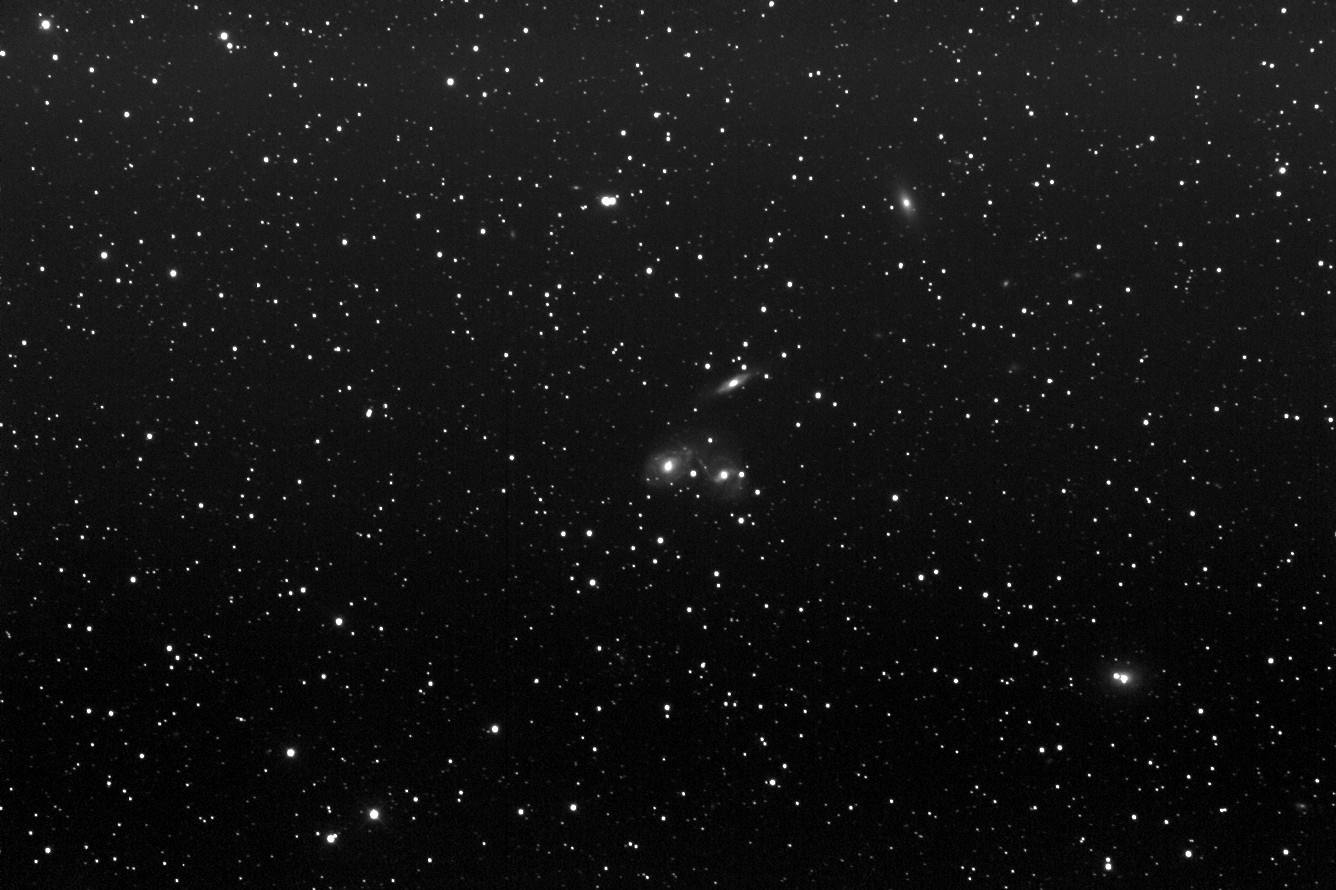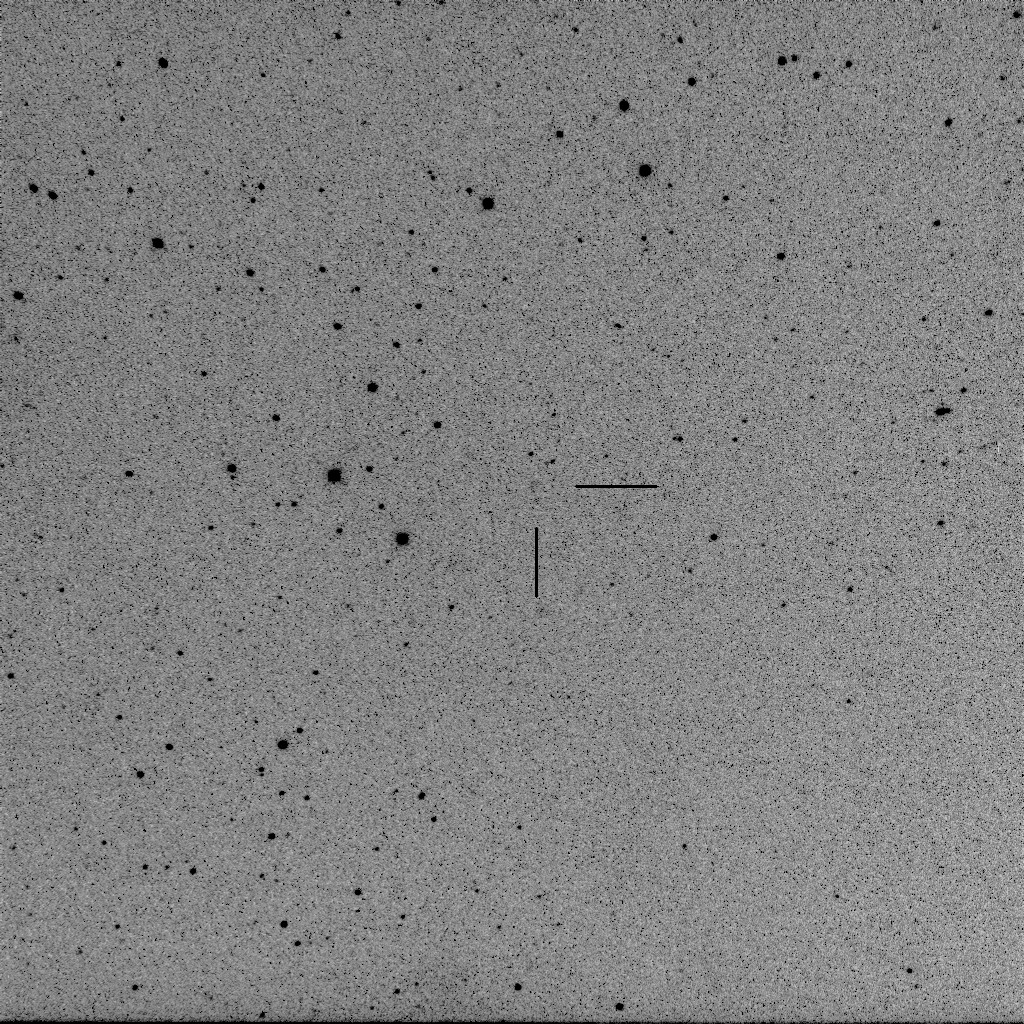Most of the GRAS telescopes have monochrome cameras so I haven’t done much with the one shot colour cameras. However, when I was looking for a telescope / camera combination for imaging M33 I realised that GRAS-003 (a Takahashi TOA-150 with an FLI 8300) fitted the bill exactly with the galaxy filling the frame.
Five 10 minute exposures later and this is the result:
M33 has a very low surface brightness due to the fact that it’s light is spread out over a large area. This makes it a difficult visual target but it responds well to long exposure photography.
While visible to the naked eye (given a low enough level of light pollution) no pre-telescope notes are made of it; you’d be unlikely to notice it unless you already knew it was there. It was catalogued by Messier in 1764 and was one of the first ‘Spiral nebulae’ observed by Lord Rosse.
At a distance of 2.8 million light years it is 50,000 light years across and contains around 30 – 40 billion stars.










